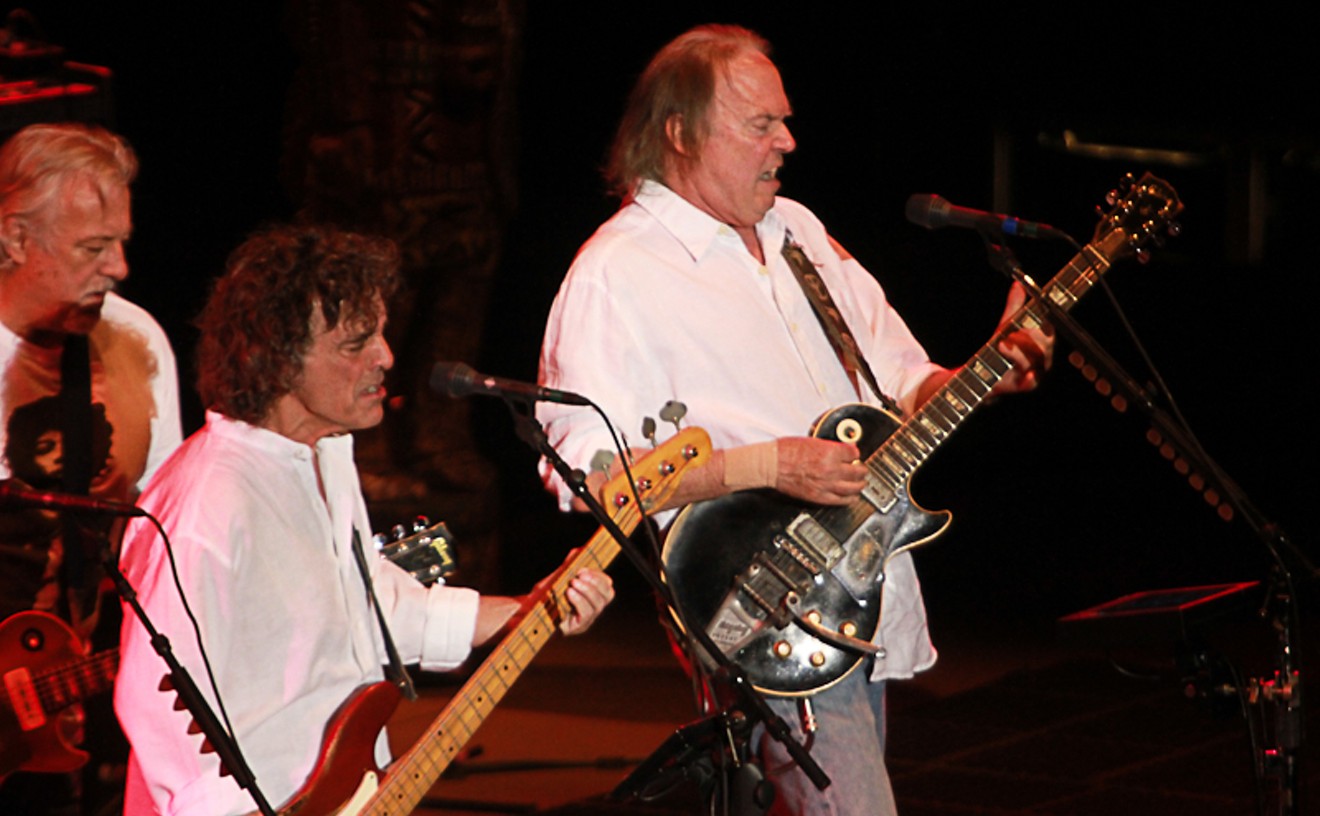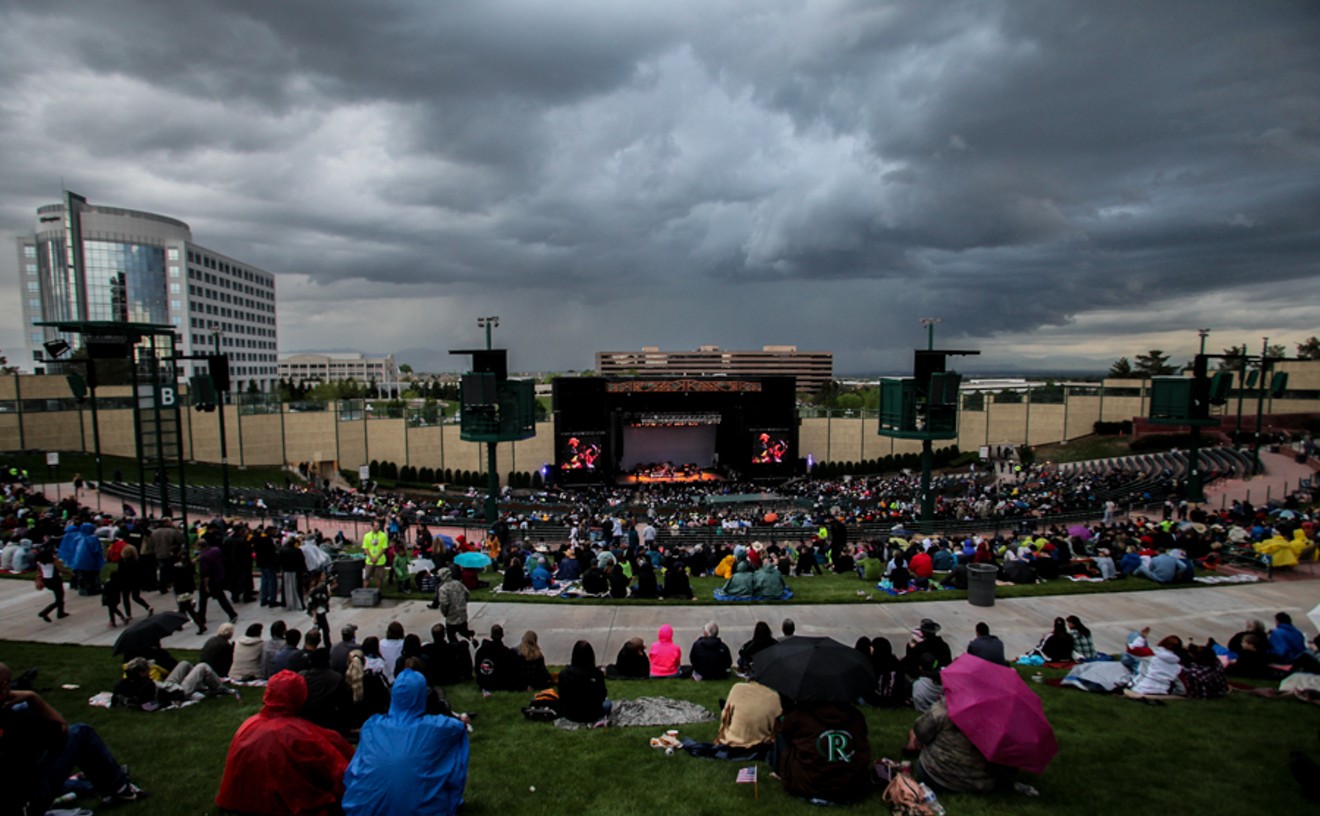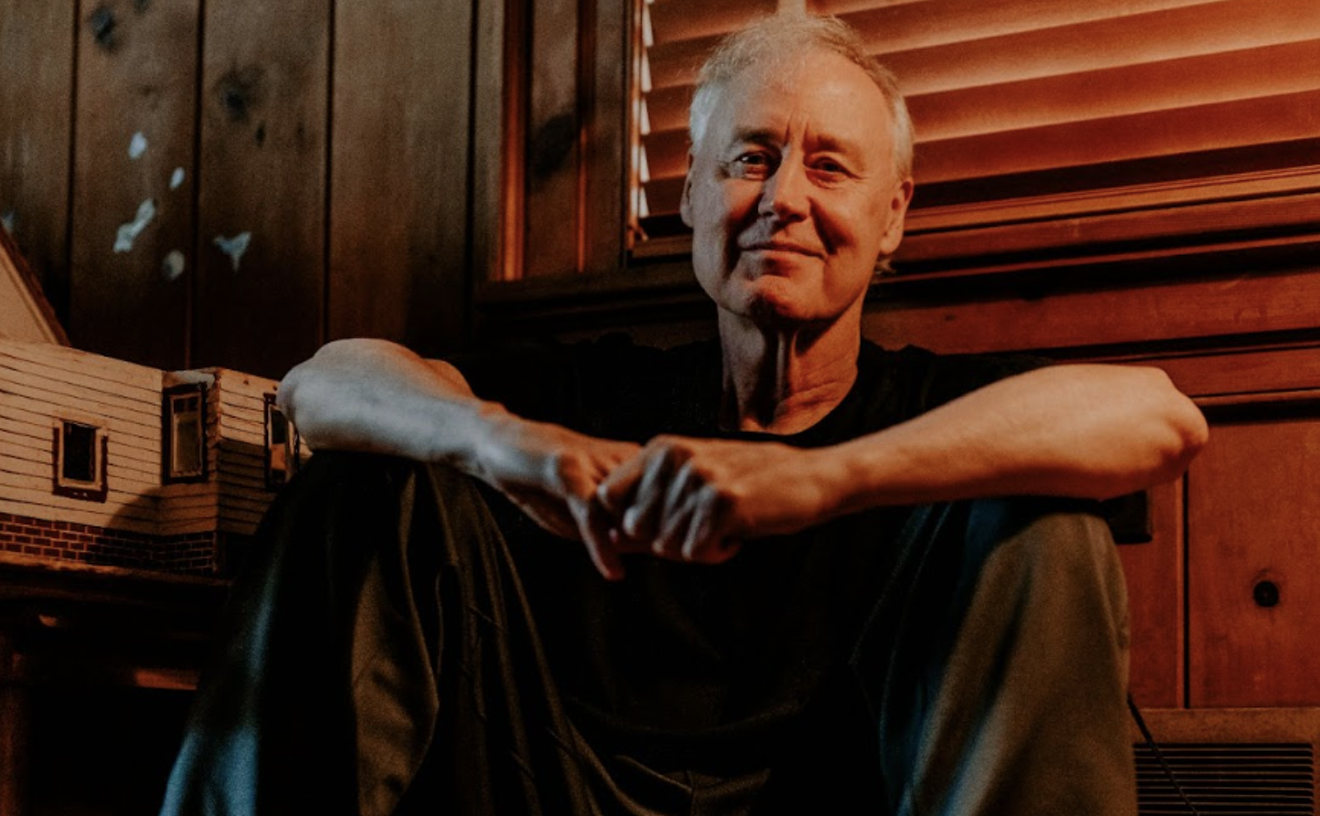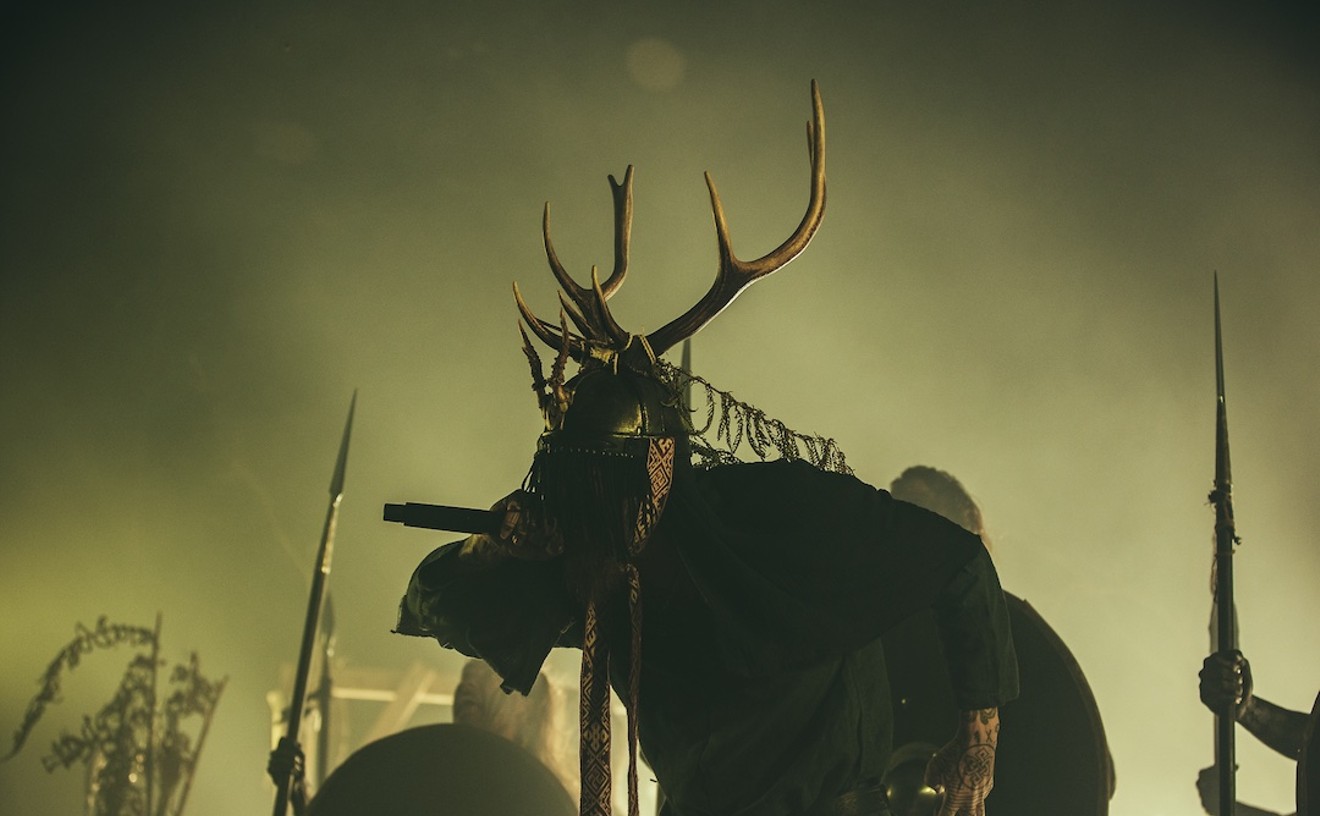There was the time, for example, when Ragin's junior high ensemble in Houston wasn't giving a Duke Ellington medley the swinging treatment it deserved. So the band director instructed his charges to listen and learn when the Duke came to their town. At the performance, Ragin and his classmates met Cat Anderson, the famous high-note trumpeter.
"That was probably my first street lesson," says Ragin, now 48 years old. "I call them street lessons, when you go out there and just ask guys for information. There were eight of us sitting around in a circle with him, guys from junior high, high school, college, professionals, and somebody said, 'Cat, what was the highest note you hit?'
"He said, 'Triple B natural.'
"We all said, 'Whoa!'
"Somebody said, 'Cat, give me some of those chops' -- he was talking about the lips -- 'give me some of those chops so I can hit the high notes.' He was joking.
"But Cat took that real seriously. He said, 'You know, I would give you some of these chops if I thought they would help you with the high notes. But I get all my high notes from here.'" Ragin points to his temple.
It's a lesson Ragin could relate to even as an adolescent: Discipline, curiosity and concentration are among the traits that have served him well since he gave up football for the trumpet in eighth grade. In the meantime, Ragin has combined both street smarts and classroom training to make his mark. Though his reputation, at least among the listening public, may not reflect his wide-ranging accomplishment, recent signs indicate that may be changing. Earlier this year, Montreal-based Justin Time Records released An Afternoon in Harlem, and more than one nationally published critic has earmarked a place for it on their annual top-ten lists.
Yet An Afternoon in Harlem isn't Ragin's only release this year: the duo CD, Gallery (on the Creative Improvised Music Projects label), recorded with Denver pianist Marc Sabatella, is a fine accomplishment of a different sort. It's a quieter, more spacious encounter for the duo, who trace their friendship to Fort Collins, where Ragin once taught at Colorado State University. Gallery has an avant edge just beneath the contours of its melodic moments -- and vice versa. And should anyone doubt the versatility of the classically trained Ragin, they need only listen to last year's Soft Soul & All That Jazz from Fort Collins' Linden Street Records. On Soft Soul, Ragin and vocalist/keyboardist Walt Jenkins mix originals and standards with an entertaining R&B vibe.
Though the list of releases on which Ragin assumes a leadership role is relatively short, his extended credentials arguably make him the most esteemed player among Colorado's active jazz musicians. When not composing, teaching or performing on his own, Ragin furthers his long-standing relationships with some of the giants of modern jazz. On stage at Iridium in New York in early October, for example, he held the lead trumpet position for the David Murray Octet. In the midst of a week of performances celebrating the music of John Coltrane, the ensemble mesmerized a packed house with its renditions of "Mr. P.C." and "Acknowledgement." Ragin also appears on more than a few Murray records, including the recent Speaking in Tongues.
Flutist James Newton, an active performer and professor at the University of California at Irvine, where Ragin recently led a series of "well-received and inspiring" master classes, admires Ragin to the degree that he insists on bringing him to Los Angeles for his big-band concerts. "What for me makes him so exceptional," says Newton, "is that he has such a firm grasp and understanding of the tradition and is, at the same time, very much a modernist. To me, that's the mark of a true traditionalist, because all of the people that we emulate in the music, they all changed it. And I think Mr. Ragin has the capacity -- and has sort of changed the set of possibilities on this instrument. For me, the range that he has, the control, the series of exquisite ideas and emotionalism of his playing -- all of those things really set him apart from other players."
"Hugh is definitely one of the front-runners of the trumpet," agrees saxophonist Roscoe Mitchell, a founding member of both the Art Ensemble of Chicago and the Association for the Advancement of Creative Musicians, with whom Ragin has recorded and collaborated for nearly twenty years. "He's a great man and a great musician. He works hard at it. That's what it takes." A recent reissue, More Cutouts, presents the imaginative interplay of 1980 sessions that feature Ragin, Mitchell and drummer Tani Tabbal. Ragin also shines on this year's Nine to Get Ready, an orchestral recording with a surprisingly nimble feel, released by Mitchell and the Note Factory.
Ragin's life of the musical mind began at an early age. His father played saxophone and his mother, a music teacher, introduced him to the piano in the second grade. His early training was in classical music, though jazz was always right around the corner in Houston. "My band director in junior high grew up with Horace Silver, so he would always instill upon us the idea of being able to go to New York with fifty dollars and your instrument and being able to survive," says Ragin. "So we would play 'William Tell Overture' in concerts as well as Duke Ellington medleys."
Later, while earning a degree in music education at the University of Houston, Ragin expanded his universe even further. "In college, I started playing more in funk bands," he remembers. "I would be in two bands. One band, everybody read music. There were like eight of us -- two people would be assigned to do a chart and rehearse. In the other band, nobody read. I like to be in both environments just to keep my 360-degree program together."
Like other musicians of his generation, Ragin's career took a radical turn when he visited the Creative Music Studios in Woodstock, New York. At the time, the radicalism of the Ensemble was quite a departure from Ragin's gig with a dancehall band in Fort Collins, where he had relocated to pursue a master's degree in classical performance at Colorado State University. Ragin has made the most of that ten-day intensive session, which centered around New Year's of 1978-79 and featured all five members of the Art Ensemble of Chicago, including Roscoe Mitchell. "Actually, that wasn't the normal way the school was run," he explains, "but when the entire Art Ensemble came, the school took on another character."
The workshops fueled an interest in free jazz that Ragin had maintained for years. "After some of those rhythm-and-blues gigs, we would go and listen to Anthony Braxton," he recalls. "We were playing dance music, but this was cosmic music, this was heavy. So it was kind of a diversion from what we were doing. And we felt we were getting into the higher intervals and harmonies of the music."
The ten-day session led to a fruitful, long-lived relationship with Mitchell. Although Ragin is a respected educator whose resumé includes a stint as acting director of jazz studies at the Oberlin College Conservatory of Music, he still considers himself a pupil of Mitchell. "He's the teacher and I'm the student. I went to Woodstock primarily to study composition with Roscoe Mitchell. That's really all I wanted," Ragin says. "But it just so happened that the whole Art Ensemble was there and there were a lot more benefits."
Ragin's relationship with David Murray, which also dates to the Seventies, has been another major influence on both his life and his artistry. It wasn't until the mid-Eighties, however, that Murray put Ragin's abilities to the test. "I saw him in Boulder and he said, 'You know, I never heard what you would sound like in my band. Why don't you sit in so I can hear what you sound like?'" recalls Ragin.
"I said, 'No, David, I don't have my horn.'
"He said, 'Well, I got two trumpet players up there. Borrow one of theirs.'
"I said, 'Oh, no, David, I can't do that. That's hard to do.'
"Then he said, 'Well, let me hear how hard it is.'
"So I played, and about six weeks later I was staying at his house. We were playing at Sweet Basil." They've been close ever since, says Ragin.
Beyond those two modern jazz notables, Ragin's career has led to him to perform with a range of renowned figures, from mainstream trumpeter Maynard Ferguson to outer-space blues pianist Sun Ra to cutting-edge saxophonist Anthony Braxton to James Brown and P-Funk trombonist Fred Wesley. And that history is evident in his current approach to music-making.
"I just try to capture the history of music from a jazz perspective. The blues really is the foundation," he says. "It's like on the CD, Harlem, [the song] 'The Moors of Spain' is in three sections. One is 'In Times of Peace and Prosperity,' it's kind of mellow, really melodic. Then it moves into 'Marching to War,' which is a little more intense. Then 'Chaos' gets more into sounds. In a piece like that, I got pretty distinct areas that I threw together so they would segue into each other. And I'd say that kind of describes a lot of my music -- as taking a lot of areas and layering them together." Harlem does exemplify the logic: Though it easily shifts from fast bop to neo-swing to ballad to collective improv, the blues runs its course throughout.
In both recording and performance, ordinary distinctions between "high" and "low" performance don't seem to concern Ragin. The perfect execution of a concert-band performance is neither superior nor inferior to the good vibes created during a crowd-pleasing, soul-tinged jam. And to Ragin, they're not mutually exclusive. "With David Murray, we read and then go off the paper," he explains. "We get both of them going. We get the spirituality thing that way."
With his good-natured modesty shining through, Ragin's reputation on the national jazz scene is another thing that he doesn't appear to be overly concerned with. He's quite happy with his current position, which he describes "a pure joy." And Ragin is finding even more territory to explore. He's been commissioned to write an electronic piece, for Pauline Oliveros's Deep Listening Band, to premiere at Lincoln Center in New York in August. He'll also lead a trumpet workshop in Paris next spring and his own group will tour Europe in the summertime.
Ragin is based in jazz's past as surely as Wynton Marsalis's Thick in the South. But he's no more bound by it than the freethinking Miles Davis. "I'm very rooted in the tradition, even though I like to branch. That's that fundamental I'm talking about. That tradition is the beginning, that one note that Cat Anderson was talking about," says Ragin, again pointing to his temple.
"The trumpet is just an amplifier," he continues, "because, really, the music's here, and it's this connection that it's really all about."










